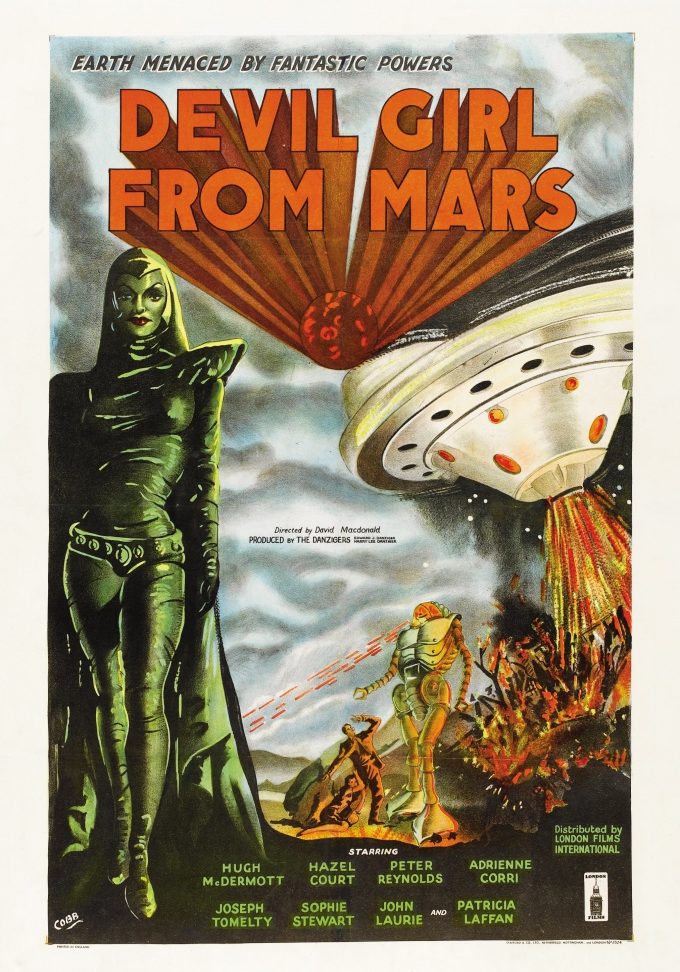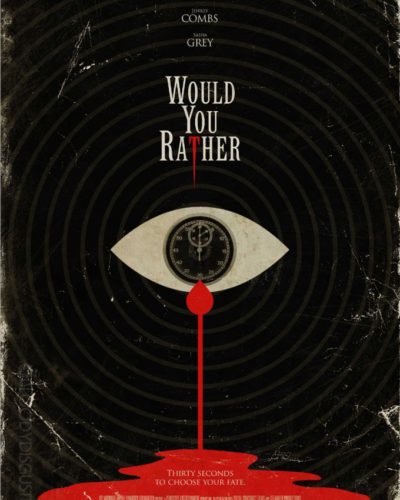A Martian Maven Invades: “Devil Girl From Mars” Unearthed
“You cannot escape me! I am Nyah the all-powerful!” With this chilling declaration, ‘Devil Girl from Mars’ marks its place in the annals of 1950s sci-fi horror. Released in 1954 and directed by David MacDonald, this British film is an oddity that blurs the line between horror and sci-fi with its tale of extraterrestrial invasion. A Martian woman lands in the Scottish moors seeking men to repopulate her world, inadvertently terrorizing the patrons of a remote inn. While it may not have achieved classic status, it’s a film that certainly deserves a closer look for its enthusiastic ambition and unique place within the genre.
Barren Moors, B-Movie Terror
Crafting the Chills
The atmosphere and tone of ‘Devil Girl from Mars’ operate in the realm of the uncanny. MacDonald leans into the isolation of the Scottish setting, using the vast empty landscape as a canvas for impending dread. The horror of ‘Devil Girl from Mars’ manifests less through shock and more through the implacability of its antagonist, Nyah (played by Patricia Laffan), whose stoic demeanor and unyielding purpose cast a startling contrast to the emotive human characters.
Lensed Through Simplicity
The film’s cinematography is a product of its time and budget. Stark lighting and pragmatic camera work serve the story without inflating it. This is not a world of vibrant colors; instead, it’s painted in the stark blacks and whites of the post-war era, a visual metaphor for the black-and-white morality play that unfolds. It’s in these limitations, though, that the movie finds its charm, creating a look that is now nostalgically identified with 1950s genre flicks. Special effects are used sparingly; the Martian robot and spaceship are both kitsch and quaint by today’s standards, yet they add a layer of camp appeal.
Soundscapes of Otherworldliness
Building Tension on a Sonic Foundation
Where visuals are constrained, sound plays a vital role. Eerie electronic music and resonating sound effects predate the theremin-laden scores of later films and help cementing the alien presence of Nyah. It was an era when the less-is-more approach to horror was typically more effective, and the somber music paired with the silence of the Scottish moors contributes to a slow build of suspense.
A Performance Puzzle
The characters are archetypical, serving more as chess pieces in Nyah’s game than as deep, fleshed-out personalities. That said, Laffan’s portrayal of the titular ‘Devil Girl’ is steeped in cold arrogance and is genuinely unsettling. The rest of the cast ranges from the earnest to the melodramatic, delivering performances that are par for the course in B-movies of the time. Their terror, more soap opera than psychological thriller, may not convince a modern audience but embodies the era’s stylized affectation.
Genres Entwined, Society Reflected
Horror, Sci-Fi, and the Human Psyche
‘Devil Girl from Mars’ melds science fiction with horror, focusing largely on an alien threat but using it as a vehicle for suspense. It indirectly explores themes of gender roles and power with its narrative of a dominant female from a technologically superior society seeking to subdue the men of Earth. In the context of 1950s anxieties about gender and the emergent Cold War fears, the film lightly touches on these larger issues without becoming a manifesto.
Frights and Themes Dissected
The horror is less about jumps and gore and more about the underlying idea of being utterly powerless against a superior force. It’s a film that aims to unsettle rather than terrify, to provoke thought rather than elicit screams. The Martian’s impassive advance is the creeping dread, with humanity’s confrontation appearing fecklessly human, perhaps even futile.
In Conclusion: Mars Needs Critics
While far from a cinematic masterpiece, ‘Devil Girl from Mars’ is a fascinating cultural artifact that can be quite enjoyable for fans of classic sci-fi and horror. It’s neither groundbreaking nor particularly frightful compared to contemporary scares, but its quaint execution and moments of genuine unease provide a certain charm. Aficionados of vintage genre films will likely appreciate its qualities and its place within the broader tapestry of horror and science fiction. For those less versed in the aesthetic of ’50s B-movies, the film’s value may be more educational than visceral.
The film navigates through its shortcomings to arrive at a niche audience. The lack of graphic content or substantial triggers makes it friendly for broad consumption, though the dated effects and storytelling style might not suit viewers seeking high-octane horror or sleek production values.
To sum up, ‘Devil Girl from Mars’ is recommended viewing for those with a penchant for classic genre exploration or an interest in the development of sci-fi tropes. It’s an entertaining relic that may not summon nightmares, but is guaranteed to transport its audience to an era of simpler cinematic frights and mid-century Martian invasions.




